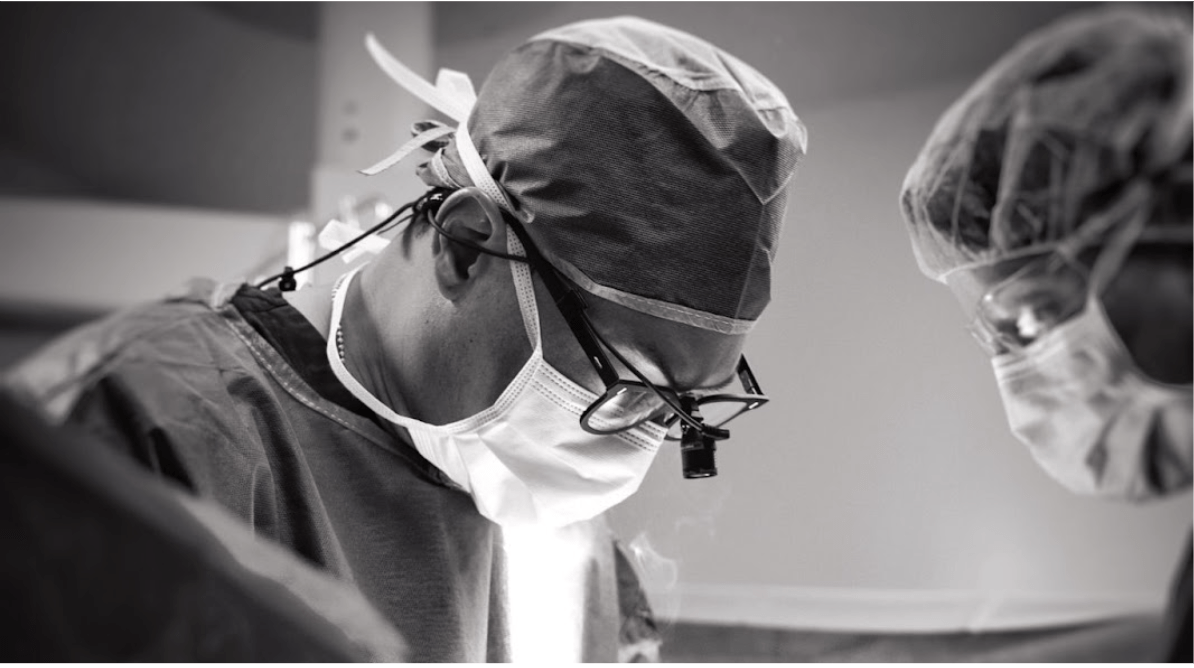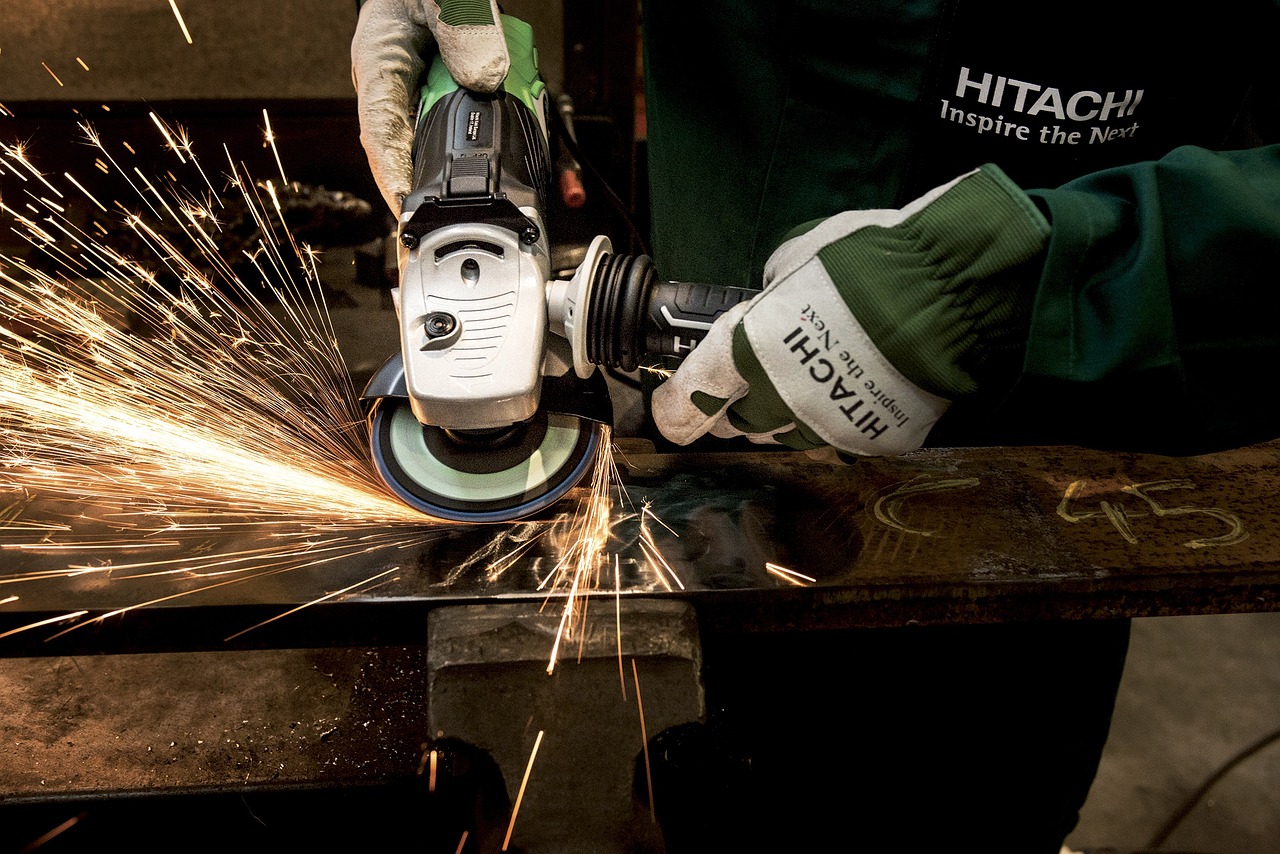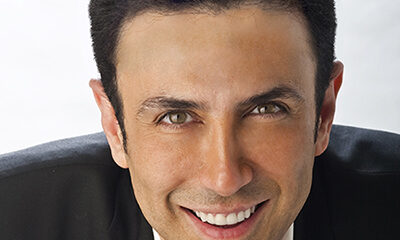Health
Inside Dr. James Lee’s Surgical Suite: A Look at Gynecomastia Correction

Byline: Katreen David
“Cosmetic surgery is no longer about extremes; it’s about harmonizing your outer self with the person you’ve always known yourself to be,” says Dr. James Lee, reflecting on the industry’s evolving standards for both men and women. “In recent years, we’ve seen a gravitation toward subtle enhancements that speak to individual authenticity rather than transformation for the sake of it.”
Procedures such as gynecomastia correction are a barometer of the times. It captures society’s dynamic views on beauty, self-expression, and, increasingly, the desire for authenticity.
Gynecomastia correction is a procedure designed to address the excessive development of male breast tissue, a condition that can cause emotional distress and a deep sense of self-consciousness for many men. Gynecomastia is more than a cosmetic issue. It stems from various causes—hormonal imbalances, obesity, genetics, or even the side effects of medication. For numerous men, surgery is the final step after years of struggle with their body image.
“I’ve had patients tell me they haven’t been to the beach in years or that they wear multiple layers of clothing just to feel comfortable,” Dr. Lee explains. “It’s not just about how they look, but how they feel about themselves.”
The surgical suite of Dr. James Lee, a leading figure in the plastic surgery industry, makes ripples in this respect. His practice is a safe space where progressive techniques meet state-of-the-art technology, offering clients subtle amplifications that make them feel secure, comfortable, and welcome in his practice.
Precision Meets Compassion in the Operating Room
For Dr. Lee, each gynecomastia surgery is a blend of art and science, involving the removal of excess fat, glandular tissue, and, in some cases, skin. He uses a combination of liposuction and excision techniques, depending on the patient’s needs. Small incisions are carefully placed in inconspicuous areas, often around the nipple or lateral chest, to minimize scarring.
“The goal is to restore a natural, masculine contour to the chest while minimizing any visible signs of surgery,” says Dr. Lee. His steady hands reflect years of experience and dedication to delivering results that are both physically transformative and emotionally freeing.
Patients, typically, undergo the procedure under local anesthesia with sedation, though some opt for general anesthesia. The operation itself may take a couple of hours, but the impact on the patient’s life can be immeasurable.
It is worth noting that, in Dr. Lee’s practice, the procedure doesn’t end in the operating room. Instead, it is the beginning of a recovery process designed to render the best possible results.
“We take the time to walk patients through every step of recovery,” he says. “From wearing compression garments to controlling swelling, everything is about ensuring the final result meets their expectations.”
Patients leave the clinic the same day, albeit with detailed post-operative instructions that extend beyond healing. For Dr. Lee, success is measured by physical results, the patients’ trust in him, and their satisfaction with their newfound confidence as they recover and return to their daily lives.
The Psychological Toll of Gynecomastia
Gynecomastia affects more than just the physical appearance. A multitude of men experience a profound impact on their self-esteem and mental well-being. As Dr. Lee notes, “Some men live with this condition for years, feeling trapped in their bodies and avoiding social activities, sports, or even intimacy because of how they feel about their chest.”
In a society where male body image issues are often overlooked, Dr. Lee’s practice is a safe space where men can openly discuss their struggles. He frequently hears stories from patients who have been ridiculed or who have suffered in silence, feeling isolated because of a condition that is rarely talked about.
However, once they have the surgery, the change in their demeanor is almost immediate. “It’s like watching a weight being lifted off their shoulders,” says Dr. Lee. “They carry themselves differently, with more confidence. It’s not just a physical transformation; it’s an emotional one as well.”
Dr. Lee understands the sensitivity surrounding gynecomastia correction and has tailored his approach to meet both the physical and emotional needs of his patients. Each consultation is an opportunity for him to listen and guide his patients through the decision-making process, ensuring they have realistic expectations and understand the nuances of the surgery.
Dr. Lee’s reputation for gynecomastia correction has earned him praise in the medical community and gratitude from countless patients. As body image issues among men continue to gain recognition, his work shines a light on the importance of offering solutions that go beyond the surface.
Beauty Rewired: High-Tech, Heartfelt Transformations
One of the hallmarks of Dr. James Lee’s practice is his meticulous work in the operating room and the exceptional team providing outstanding service by his side.
Dr. Lee is acutely aware of the importance of balancing technology with the indispensable human touch. “Technology is an incredible tool, but it’s not a replacement for the surgeon’s proficiency and intuition. My job is to guide my patients and help them understand what’s possible and realistic,” he says. His mantra resonates with a growing demographic of patients seeking reassurance and innovation in equal measure.
The Road Ahead: Ethical and Aesthetic Considerations
As the industry evolves, ethical considerations are increasingly coming to the forefront. The rise of social media has fueled unrealistic beauty standards, leading to an uptick in procedures among younger demographics. This has prompted a debate within the industry about the role of cosmetic surgery in perpetuating certain ideals.
“We have a responsibility as surgeons to ensure that our work doesn’t contribute to a culture of unattainable beauty,” Dr. James Lee emphasizes. “We have to focus on enhancing what’s already there, not creating something that isn’t. Patients should feel empowered, not pressured, by the available options.”
Top-tier surgeons are increasingly adopting this ethical stance as they recognize the impact of their work on both individual lives and vast societal standards.
Where Beauty Meets Brains: Crafting Aesthetic Integrity in the Modern Age
As we move further into 2024, it’s clear that the field of cosmetic surgery is undergoing a significant transformation—one that prioritizes authenticity, patient well-being, and ethical responsibility.
Dr. James Lee is one of the forward-thinking minds propelling this movement to new heights. He effectively leads the way with innovative techniques and a commitment to natural, individualized results. “The future of cosmetic surgery isn’t about keeping up with trends; it’s about understanding what makes each person unique and enhancing that essence,” he concludes.
Responding to the critics who typecast the beauty industry as a superficial field, Dr. James Lee’s plastic surgery clinic offers a refreshing perspective. It values subtlety over spectacle and integrity over imitation. This is the essence of gynecomastia correction and every other careful procedure that Dr. Janes Lee performs.
As the demand for these kinds of results grows, so does the importance of practitioners who can deliver them with skill and sensitivity. Dr. James Lee’s practice is a game-changer in this new era, where technology and artistry meet to create something truly remarkable: your most authentic version.
Health
Dr. Teresa Tyson, DNP, Discusses The Hidden Healthcare Crisis in Remote Regions

Image source: Dr. Teresa Tyson, DNP, and Health Wagon
Access to healthcare remains a challenge for many individuals living in rural and remote areas, where medical facilities are scarce or difficult to reach. Many residents endure long travel times for even basic medical services, leading to delayed diagnoses and worsening health conditions. The lack of healthcare professionals further compounds the issue, leaving communities with inconsistent or inadequate care.
While technology and government initiatives have made strides in addressing these disparities, Dr. Teresa Tyson, DNP, notes how there are many obstacles still hindering widespread improvement. Bridging the healthcare gap requires a combination of innovative solutions, infrastructure development, and policy changes to ensure that medical services reach those who need them most.
Limited Access to Medical Care
Many remote regions struggle with a severe lack of healthcare facilities, leaving residents with minimal options for medical treatment. Hospitals and clinics are often located hours away, making even routine checkups a logistical challenge.
A shortage of medical professionals further worsens the situation, as many doctors and nurses prefer to work in urban areas with better resources and career opportunities. As a result, rural communities often rely on understaffed clinics or visiting healthcare workers who may not be available consistently. This leads to delayed diagnoses and inadequate treatment for chronic conditions. Many rural clinics operate with limited medical supplies, making it difficult to provide comprehensive care even when healthcare professionals are available.
In some cases, patients must travel long distances just to receive basic care, often at great personal and financial costs. The burden of transportation, time off work, and the uncertainty of available treatment discourage many from seeking medical attention until their conditions become severe.
Health Risks and Consequences
Delays in medical care often mean that conditions that could have been treated early turn into serious health complications. Many individuals in remote areas develop chronic illnesses that go undiagnosed for years simply because healthcare services are too far away or difficult to access. Diseases that are manageable with regular monitoring, such as diabetes or hypertension, frequently spiral out of control due to the lack of consistent medical supervision.
Beyond physical health, the absence of adequate healthcare also takes a toll on mental well-being. Isolation and limited access to mental health professionals leave many struggling with anxiety, depression, and other psychological conditions without proper support. In small, tight-knit communities, stigma around mental health can make it even harder for individuals to seek help, further exacerbating the crisis.
Preventable diseases continue to spread in these areas due to the lack of vaccinations, screenings, and early interventions. Without proper healthcare infrastructure, outbreaks of common illnesses can have devastating effects, particularly on children and the elderly. The combination of poor access, financial barriers, and limited awareness creates a cycle where minor health concerns escalate into life-threatening conditions.
Challenges in Expanding Healthcare Services
Building and maintaining healthcare infrastructure in remote regions comes with considerable hurdles. Poor road conditions and unreliable transportation make it difficult for medical professionals to reach patients, and in some cases, ambulances are unavailable, forcing residents to rely on personal vehicles or community efforts to transport those in need. In areas with extreme weather conditions, seasonal challenges further complicate healthcare delivery, cutting off entire communities during certain times of the year. These conditions make it nearly impossible for emergency medical teams to provide timely assistance in critical situations.
Funding remains a major obstacle, as rural healthcare facilities often struggle with limited financial resources. Many small clinics operate on tight budgets, lacking essential medical equipment and supplies. Without sufficient investments, these facilities cannot expand their services, making it harder to attract and retain qualified healthcare workers. As a result, many professionals opt to work in urban settings where they have access to better salaries, career advancement, and modern medical technology.
Role of Technology in Bridging the Gap
Advancements in technology are offering new ways to connect patients in remote areas with medical professionals. Telemedicine has made it possible for individuals to consult doctors without having to travel long distances, reducing delays in diagnoses and treatment. Virtual consultations, remote monitoring, and mobile health apps allow patients to receive medical advice without needing to visit overcrowded or distant healthcare facilities. In addition to telemedicine, artificial intelligence is being used to assist in diagnosing conditions remotely, helping bridge the gap in specialist care.
Despite its potential, implementing technology-driven healthcare solutions in rural regions is not without obstacles. Many areas lack reliable internet access or the necessary digital literacy to make full use of telehealth services. Even when technology is available, the cost of devices and connectivity can create another barrier, preventing low-income households from benefiting fully. Addressing these issues requires a combination of infrastructure development, education, and financial support to ensure that technology can be effectively integrated into rural healthcare systems.
Efforts to Improve Rural Healthcare
Governments and nonprofit organizations are actively working to address the healthcare challenges faced by remote communities. Investment in medical outreach programs, mobile clinics, and training initiatives for local healthcare workers has helped bring essential services to those who need them most. Some regions have introduced incentive programs to encourage doctors and nurses to work in underserved areas, offering student loan forgiveness, housing assistance, or higher salaries.
Community-led initiatives also play a crucial role in improving healthcare access. Local volunteers and advocacy groups often step in to provide educational workshops, vaccination drives, and wellness programs tailored to the specific needs of their communities. These grassroots efforts help bridge gaps where formal healthcare systems fall short, ensuring that residents receive at least some level of medical support.
Future Prospects for Remote Healthcare
Innovations in medical technology, policy changes, and raising awareness are shaping the future of rural healthcare. The expansion of telehealth services, combined with improved infrastructure, has the potential to make healthcare more accessible and efficient. Continued investment in mobile medical units and community-based programs could ensure that even the most isolated areas receive the care they need. Research into low-cost, portable medical devices is also opening new doors for remote diagnostics and treatment.
Sustained progress will depend on collaboration between governments, healthcare providers, and local communities. Long-term solutions require more than temporary programs; they demand systemic changes that prioritize equitable medical access. If these efforts continue to grow, rural healthcare systems may finally move toward lasting improvements that benefit future generations.
-

 Tech4 years ago
Tech4 years agoEffuel Reviews (2021) – Effuel ECO OBD2 Saves Fuel, and Reduce Gas Cost? Effuel Customer Reviews
-

 Tech6 years ago
Tech6 years agoBosch Power Tools India Launches ‘Cordless Matlab Bosch’ Campaign to Demonstrate the Power of Cordless
-

 Lifestyle6 years ago
Lifestyle6 years agoCatholic Cases App brings Church’s Moral Teachings to Androids and iPhones
-

 Lifestyle4 years ago
Lifestyle4 years agoEast Side Hype x Billionaire Boys Club. Hottest New Streetwear Releases in Utah.
-

 Tech6 years ago
Tech6 years agoCloud Buyers & Investors to Profit in the Future
-

 Lifestyle5 years ago
Lifestyle5 years agoThe Midas of Cosmetic Dermatology: Dr. Simon Ourian
-

 Health6 years ago
Health6 years agoCBDistillery Review: Is it a scam?
-

 Entertainment6 years ago
Entertainment6 years agoAvengers Endgame now Available on 123Movies for Download & Streaming for Free
